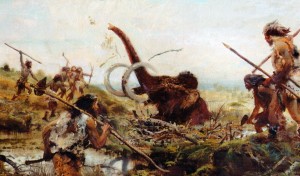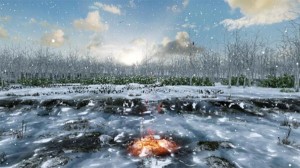The First Hunter Gatherers
Around 6,000 BC – 1,000 BC
Currently our understanding is that around 8/10 thousand years ago the first people crossed the English channel from France during the last ice age when much of the world’s oceans were tied up in the ice sheets. Sea levels were so much lower that they could actually walk from France to England. These first people would have made their way up to Scotland. The last Ice Age was around twelve thousand years ago in Scotland and when it finished a dense forest covered much of Scotland.
These early settlers came to Scotland as hunter-gatherers, and didn’t become an agricultural society until the end of the Mesolithic or beginning of the Neolithic Era.
The Mesolithic Period
The Mesolithic Period in Scotland lasted over 4,000 years
It is the oldest Mesolithic (middle stone age) site yet discovered, dating back nearly 9,000 years.
Early man learned to use his dexterous hands to make tools and weapons. They lived in small family groups or communities, relying on each other and their own unique skills to survive. Almost from the beginning of his arrival, communities were made up of coastal settlements.
Bloodstone from Rum and Arran has been discovered in Fife and southeast Scotland having arrived by boat. They had small boats (Curachs) and trade was increased.

New forth crossing artists impression of the dwelling that archaeological excavation from the mesolithic period.
Experts say the Stone Age timber structure – which may have resembled the wigwams constructed by North American Indians – was built more than 10,000 years ago, possibly as a winter retreat, in the period after the last ice age.
It was discovered in a field outside the village of Echline, near South Queensferry, during routine archaeological excavations in advance of work on the new Forth Replacement Crossing over the Forth estuary and contained flint arrowheads used by the original occupants.
Dated from the mesolithic era, the remains consist of a large oval pit, seven metres long and half a metre deep, with a series of holes which would have held upright wooden posts. They would have supported walls possibly made from animals skins, although some experts believe there may have been a flatter turf roof.
The remains of several internal fireplace hearths were also identified inside the house, which would have kept its occupants warm on cold winter nights. The site has been dated to around 8240BC, the earliest in Scotland.

Earliest Evidence shows that Scotland was inhabited 14,000 years ago
Read More

World’s oldest lunar calendar discovered in Scottish field
Read More





